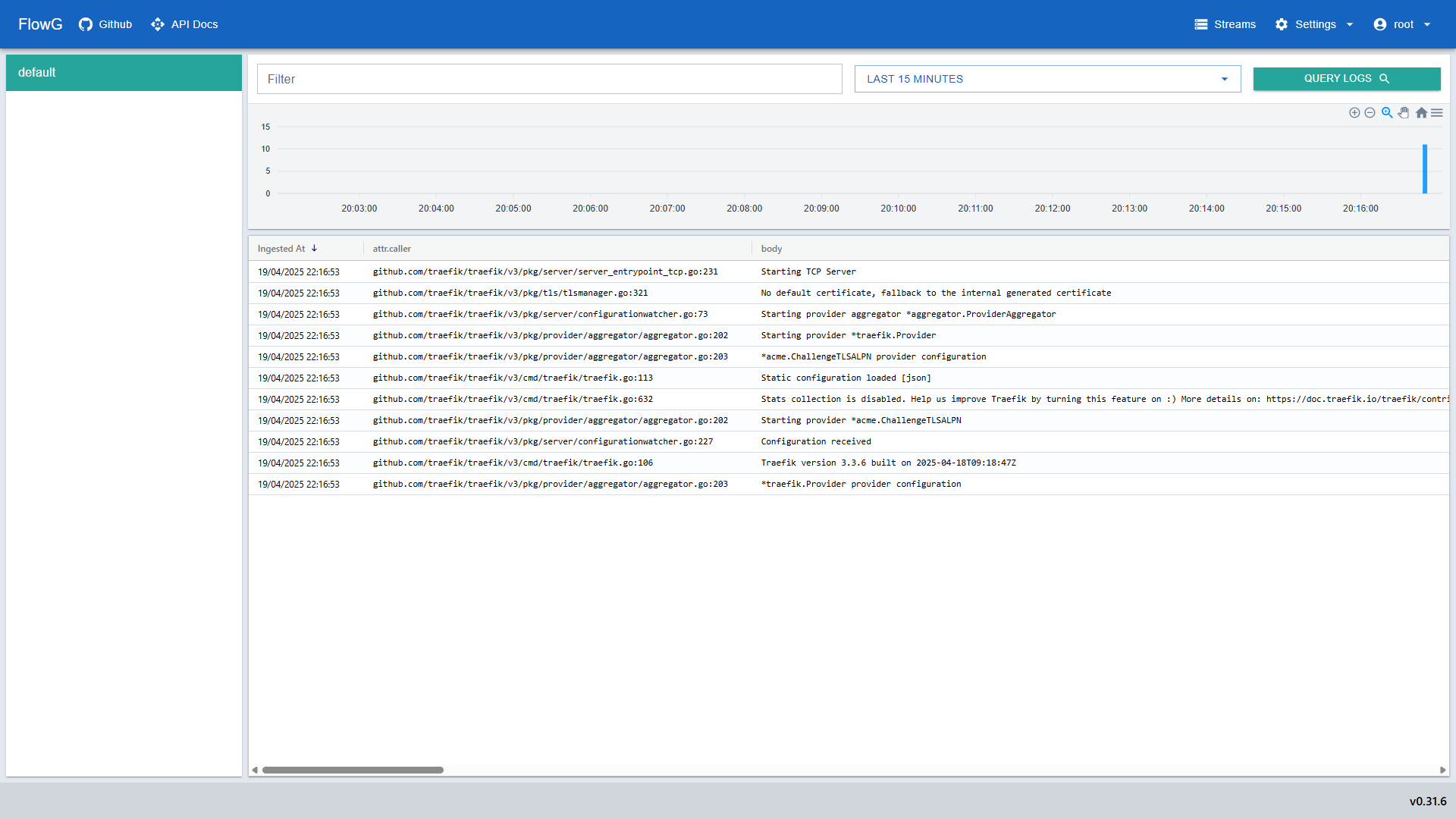Receiving logs from Traefik
Traefik is a modern HTTP reverse proxy and load balancer. It supports exporting logs to an OpenTelemetry endpoint.
OpenTelemetry OpenTelemetry is a collection of APIs, SDKs, and tools used to instrument, generate, collect, and export telemetry data (metrics, logs, and traces) to help you analyze your software's performance and behavior.
FlowG can be used to gather logs from any OpenTelemetry compatible exporter.
⚠️ Important Notice
FlowG only supports gathering logs for now, and does not support metrics and traces. There is an on-going discussion on GitHub regarding the best way to support metrics and traces in the future.
Feel free to join the discussion if you have any ideas or suggestions.
In this tutorial, we will setup Traefik to export logs to FlowG using the OpenTelemetry protocol (OTLP) over HTTP.
Setting up Traefik
Run Traefik with the following configuration:
experimental:
otlpLogs: true
log:
otlp:
http:
endpoint: http://127.0.0.1:5080/api/v1/pipelines/default/logs/otlp
headers:
Authorization: Bearer YOUR-PERSONAL-ACCESS-TOKEN
NB: This assumes FlowG is running on the same host as Traefik.
Here is another example using Docker Compose:
services:
traefik:
image: traefik:latest
environment:
- TRAEFIK_EXPERIMENTAL_OTLPLOGS=true
- TRAEFIK_LOG_LEVEL=DEBUG
- TRAEFIK_LOG_OTLP_HTTP_ENDPOINT=http://flowg:5080/api/v1/pipelines/default/logs/otlp
- TRAEFIK_LOG_OTLP_HTTP_HEADERS_AUTHORIZATION=Bearer YOUR-PERSONAL-ACCESS-TOKEN
ports:
- "80:80"
flowg:
image: linksociety/flowg:latest
ports:
- "5080:5080"
Then run with:
docker compose up flowg
# Create your personal access token and set it in the environment variable
docker compose up traefik
Setting up FlowG
When FlowG starts for the first time, a default pipeline is created which simply
store the logs in the default stream. No further setup is required to receive
the logs from Traefik:

What's next?
You can then process the logs, refine them, parse the message, and/or forward them to a third-party system such as a remote Syslog, Datadog, or even another HTTP Webhook.
See the other guides for more ideas.